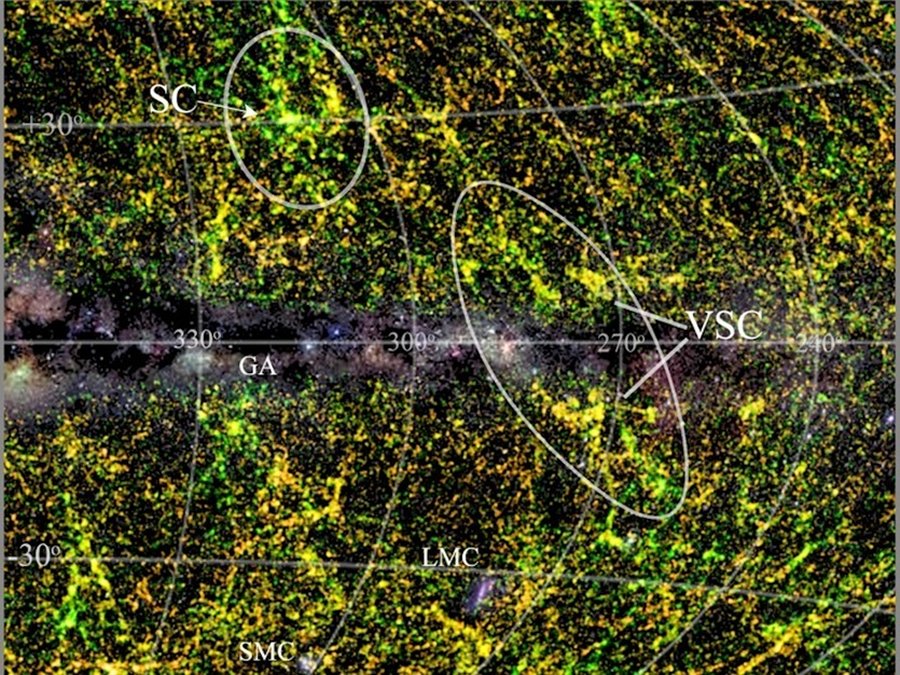MessageToEagle.com – There is a path of the sky known as ‘Zone of Avoidance’ that has long been invisible to astronomers. It is covered by the Milky Way, which obscures all structures behind it
Now, an international team of astronomers from South Africa, Europe and Australia, led by Renee Kraan-Korteweg from the University of Cape Town, have discovered the Vela Supercluster, a previously undetected major concentration of galaxies, located about 800 million light-years away.

Vela Supercluster, a gigantic group of galaxy clusters, hidden by the Milky Way galaxy’s dust and stars, has now been revealed and astronomers report their discovery in the Monthly Notices of the Royal Astronomical Society Letters.
It is believed to be the largest of its kind in our cosmic neighborhood.
“I could not believe such a major structure would pop up so prominently” after an observation of that region of space, said Renée Kraan-Korteweg, an astrophysicist at the University of Cape Town in South Africa, in a press release.
Superclusters are considered most massive known structures in the universe. Each one contains hundreds or thousands of galaxies. They can extend hundreds of millions of light-years end to end. The most famous, the Shapley Supercluster, for example, is thought to be the largest of its kind in our corner of the cosmos. It’s around 650 million light-years away.
See also:
Boss Great Wall: Gigantic Wall Of Galaxies Located In Deep Space
Why Are Green Galaxies So Rare?
Powerful Jet Pointing Directly At Earth
Never Ending Winter In Our Solar System
This supercluster was named after Harlow Shapley, an American astronomer, famous for his survey of galaxies, and one of the first scientists who believed in the existence of superclusters.
The Vela supercluster had gone unnoticed due to its location behind the plane of the Milky Way, that hosts trillions of planets, more than 100 billion stars, and vast colorful clouds of gas and dust.
Kraan-Korteweg and her crew examined thousands of galaxies partly within the Zone of Avoidance, which is partially masked by the Milky Way, with the Southern African Large Telescope in 2012.
They found eight new clusters in the area of the Vela constellation. Observations with the Anglo-Australian Telescope measured their redshift to track their movements – and it turned out they were all part of the one supercluster.
Further follow-up observations are needed to unveil the full extent, mass, and gravitational influence of the Vela Supercluster
MessageToEagle.com






